(Take a virtual tour of Nash’s Organic Produce and Nash’s Farm Store here.)
Mission – Nash’s Organic Produce:
- To provide healthy organic food.
- To provide right livelihood for their employees.
- To protect the local agricultural land base, the environment, and open-pollinated organic seed.
- To empower the community through information and education about healthy, local food systems.
Building a Healthy Community
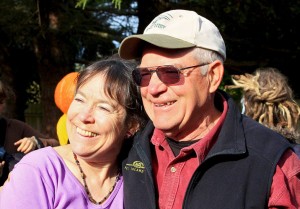
In a region that once supported 480 dairy farms and a rural agricultural landscape, now fragmented by 40 years of residential development, Nash Huber has pieced together 450 acres of rich farmland, almost all of it leased. Through the use of land trusts, restrictive zoning, conservation easements, and leasehold agreements, about two-thirds of the land it has been protected from future development, the remaining third is still under threat.
Nash’s Organic Produce is a diversified farm comprised of 75 acres of vegetables, berries, and orchard; 150 acres of grain and corn; 20 acres of organic seed; 50 acres devoted to pigs, poultry, and compost production; the rest is hay or fallow. From a number of geographically dispersed tracts, the farm team produces at least 110 varieties of organic vegetables, fruit, grain, freshly ground flour, and seeds, as well as pastured pork and eggs.
 Sustainable use of such valuable and productive land demands good stewardship. The organic practices applied by Nash and his staff combine animal production with organic rotation to improve and protect the health and fertility of the soil on which the farm depends.
Sustainable use of such valuable and productive land demands good stewardship. The organic practices applied by Nash and his staff combine animal production with organic rotation to improve and protect the health and fertility of the soil on which the farm depends.
Located at an altitude less than 20 feet above sea level, Nash carefully manages the farm to limit any effect on the water that surrounds and nurtures his land. The farm has been certified Salmon-Safe, which reflects the water quality measures and salmon habitat protection in place.
Recognizing that a burgeoning population of more than 6600 just minutes from his farm gate needed access to healthy local organic food, Nash and Patty opened Nash’s Farm Store in 2011. The full service market launched with little fanfare and store traffic immediately required additional days and hours; the Farm Store is now open every day from 9AM to 7PM.
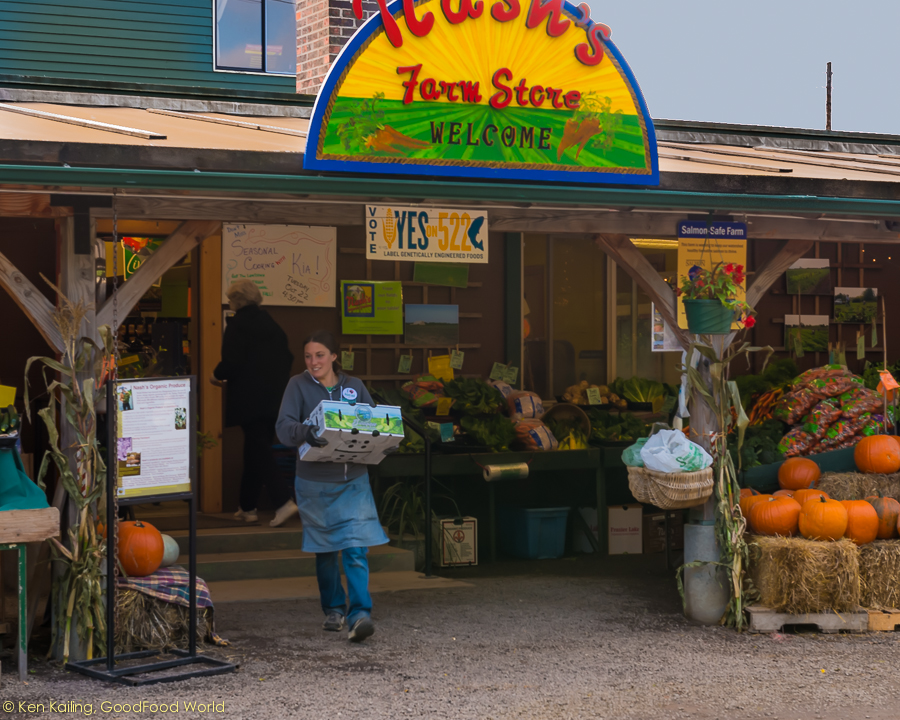 Creating and tapping into local food systems, Nash and Patty bring together products from neighboring growers and processors for their store. At the same time, Nash’s own products are available direct through the Farm Store, area farmers markets, a CSA, and a meat buying club, and wholesale to several natural food stores including PCC Natural Markets in Seattle and to Organically Grown Company, a regional organic produce distributor.
Creating and tapping into local food systems, Nash and Patty bring together products from neighboring growers and processors for their store. At the same time, Nash’s own products are available direct through the Farm Store, area farmers markets, a CSA, and a meat buying club, and wholesale to several natural food stores including PCC Natural Markets in Seattle and to Organically Grown Company, a regional organic produce distributor.
Teaching about healthy, local food – what it is, how to buy it, and how to prepare it – is an active part of Nash’s Organic Produce and the Farm Store. Classes, workshops, and lectures including topics like seasonal cooking classes or a series on a single subject (like baking or preserving) have been sell-outs, often resulting in standing room only. Soon all sessions will be moved to a renovated barn with space to accommodate the crowds.
A Food Desert in Disguise?
Drive through “Sunny Sequim” – Washington’s version of Sun City – and you will notice two things right away.
First, the city appears to have been designed by a blindfolded committee. There is little beauty, history, culture, or quality in the buildings that have been thrown up in the last 20 or so years when the population grew 83% (1990 to 2012). Or organization for that matter; the buildings appear to have been built with no consideration for land use, zoning, or rural quality of life.
The developed area is “citified,” making for many inconvenient boundaries between farm fields and high density housing, between tract homes and shopping malls.
Second, this is definitely a community of retirees! In fact, the median age for Sequim is 57.9, compared to the US median of 36.8 years.Several small and insular neighborhoods have a median age in the 70s or 80s, and a neighborhood of 350 on Sequim’s northwest side even has a median age of 90.
And like the other versions of Sun City, the weather is dry, sunny, and moderate. What better place to retire to? Unless you want to buy and eat local organic food, that is.
We read so often about food access for families and especially for children, but there is a hidden problem of food access for the elderly. It’s true that a healthy diet is critical for children as they grow and mature, but a healthy diet is just as important to the wellbeing of older adults who have much less physical and mental resiliency.
While food insecurity is a critical issue for the elderly, simple access to good healthy food is a challenge for many who have limited transportation or proximity to local organic food sources, such as seniors in rural areas.
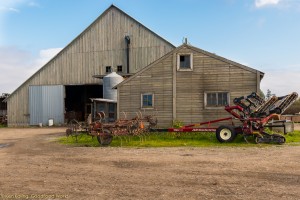
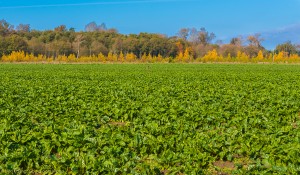
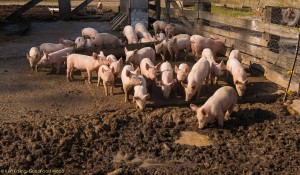 In Sequim, residents can shop at one of three major supermarkets (Safeway, QFC, and Grocery Outlet) or two small independent markets. Putting high quality organic local food on the table is not the primary goal of any major supermarket chain. Their key issues are profit, efficiency, and a simplified supply chain.
In Sequim, residents can shop at one of three major supermarkets (Safeway, QFC, and Grocery Outlet) or two small independent markets. Putting high quality organic local food on the table is not the primary goal of any major supermarket chain. Their key issues are profit, efficiency, and a simplified supply chain.
To ensure that shoppers can purchase, prepare, and consume fresh, reasonably priced, high quality produce, meats, and grains, Nash Huber and his wife Patty opened Nash’s Farm Store, just five miles from Sequim town center.
Bringing Good Food to the Table
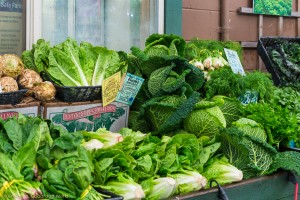 Our food system has changed substantially over the last 50 years. Globalization; centralization of the food industry and concentration of the food suppliers to fewer, larger companies; the completion of the North American interstate highway system; and low-cost air freight have all contributed to the availability of a wider variety of produce year ’round, regardless of the season or place of origin. And all these factors are subsidized by low petroleum costs – cheap oil means cheap food.
Our food system has changed substantially over the last 50 years. Globalization; centralization of the food industry and concentration of the food suppliers to fewer, larger companies; the completion of the North American interstate highway system; and low-cost air freight have all contributed to the availability of a wider variety of produce year ’round, regardless of the season or place of origin. And all these factors are subsidized by low petroleum costs – cheap oil means cheap food.
Most Americans take supermarkets’ well-stocked shelves for granted and no one seems to wonder where it all comes from. Here in Puget Sound, even at the peak of the growing season, consumers find that most of the produce offered comes from some place else. That “some place else” is most often outside the US.
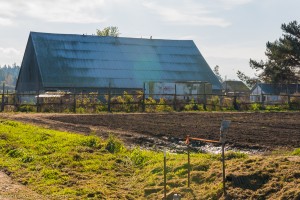 Take a look at the shelves of your local supermarket. It’s 2013 and it’s still hard to find fruits and vegetables, meat, and dairy – organic or conventional – that have been produced locally or even regionally.
Take a look at the shelves of your local supermarket. It’s 2013 and it’s still hard to find fruits and vegetables, meat, and dairy – organic or conventional – that have been produced locally or even regionally.
It’s not just the high cost of energy and “embedded carbon” from the construction of highways and manufacture of trucks and airplanes that we should be concerned about, but also the loss of the nutritive value in the food itself.
The farther food travels and the longer it takes to get to your table, the more its freshness declines and the more nutrients are lost. After all, once fruit is picked, it is dead – and it slowly spoils. To combat the natural decomposition process, fruits and vegetables are engineered for a long shelf life, sacrificing taste and nutrition for preservation.
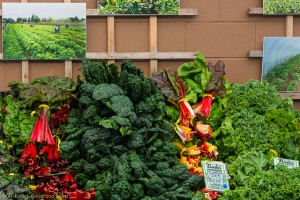 The good news is that organic products can actually travel fewer miles than they did 25 years ago. In fact, Nash used to ship organic cabbage as far south as Los Angeles. Now there are many more organic growers in California and Oregon, along the I-5 corridor. National has become regional and regional has become local.
The good news is that organic products can actually travel fewer miles than they did 25 years ago. In fact, Nash used to ship organic cabbage as far south as Los Angeles. Now there are many more organic growers in California and Oregon, along the I-5 corridor. National has become regional and regional has become local.
Since the development of refrigerated railcars and trucks, we no longer get our winter vitamin C from cabbage; we now get it from South American citrus. We are seeing economic and cultural changes that will contribute to more localization, especially when you consider that transportation costs can be as much as 18-20% of the price of produce. “That’s a significant amount of a food budget,” says Nash. “And because those dollars relate directly to carbon use, those costs are likely to go up.”
The Future
The farms of the future will be small and local… all the “push” factors are there: economics, climate change, and societal and cultural changes.
Nash Huber, Nash’s Organic Produce
Looking to a future where most of the land he works is protected through various programs like the PCC Farmland Trust and other conservation easement programs, Nash is secure that the land he and his 40+ employees work will be available to farm for the long term.
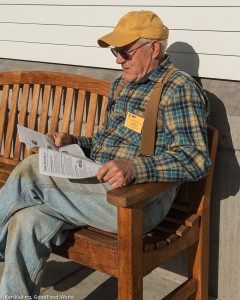
What would he like to do differently? “I’d like to do more with greenhouses, however it’s a very expensive way to grow food. It’s more of a personnel issue than a technology issue,” says Nash. Farming requires careful utilization of resources, and that includes human resources.
The real challenge is to find someone who wants to work; someone that can observe what’s going on in the fields and greenhouses and can communicate what needs to be done. Nash’s biggest need is for young people who are physically able to do the work and willing to keep at a project until it’s done, not until the iPhones in their pockets sound a notification that it’s time to head out with friends.
The average age of the American farmer is over 60 – Nash is a youthful 73 – and as those farmers retire or pass away, we will lose our industry knowledge and our information history. With that loss of knowledge, we will lose our connections between the farm and the food we eat.
It is time to shorten the link between the farm and the fork, and to buy direct from a grower, butcher, baker, or cheese maker. If you can’t do that, buy from a food co-op or small independent market to insure that a wider variety of locally produced, organic products is always available. There’s a big community out there that needs your support to deliver good food choices.
Additional Reading
Nash’s Organic Produce: http://www.nashsorganicproduce.com/
Buy local? Why local? Time for the REAL story! GoodFood World, https://www.goodfoodworld.com/2013/01/buy-local-why-local-time-for-the-real-story/ (accessed 10/28/13)
You Get to Decide What to Eat, Right? GoodFood World, https://www.goodfoodworld.com/2012/02/you-get-to-decide-what-to-eat-right/ (accessed 10/28/13)
Photo Credits
Patty and Nash Huber, source: Nash’s Organic Produce

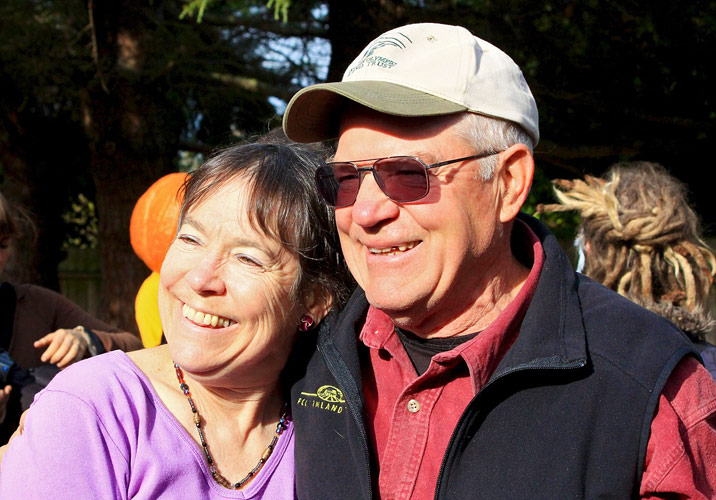
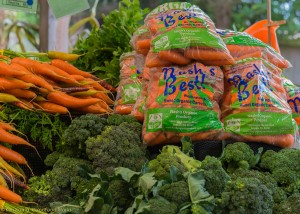
An interesting story of a couple supporting organic foods.